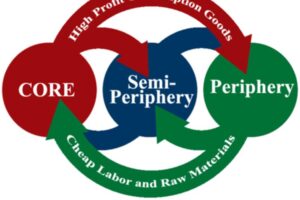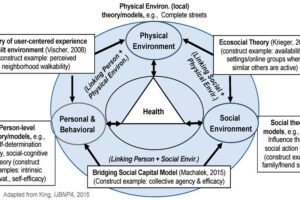
Q7(b) What is Transnationalism? Why has the scale and scope of transnational linkages of diaspora multiplied in recent times? 15 Marks (PYQ/2024)
Answer:
Introduction
Transnationalism refers to the multidimensional process through which migrants—and their descendants—maintain active connections, networks, and engagements across the borders of two or more nation-states. Unlike earlier models of assimilation, which assumed that migrants would disconnect from their homelands over time, transnationalism recognizes that people often create and sustain ongoing ties to their country of origin while simultaneously integrating into their host societies. These ties manifest in various spheres, including economic (remittances, business ventures), political (diaspora lobbying, dual citizenship policies), socio-cultural (cultural festivals, language maintenance), and social (family networks, transnational organizations).

In recent times, the scale and scope of transnational linkages have multiplied due to various structural, technological, and socio-cultural transformations. Below are key factors explaining this phenomenon, supported by theories, laws, models of migration, and case studies.
1. Theories and Models of Migration Relevant to Transnationalism
Migration theories provide a framework to understand the motivations and mechanisms behind the expansion of transnational linkages:
1.1 Ravenstein’s Laws of Migration (1885)
Ravenstein’s laws suggest that:
- Migration occurs in steps, with rural populations moving to nearby towns before reaching larger cities.
- Economic factors are primary drivers of migration.
- Diaspora communities form significant urban clusters, reinforcing transnationalism through remittances and trade networks.
1.2 Gravity Model of Migration
This model states that migration between two places is proportional to their populations and inversely related to distance. In a transnational context, diaspora communities maintain cultural and economic ties despite geographical separation.
1.3 Lee’s Push-Pull Theory
- Push Factors: Unemployment, political instability, environmental degradation.
- Pull Factors: Economic prosperity, educational opportunities, safety.
- Intervening Obstacles: Visa restrictions, financial constraints.
1.4 World Systems Theory
This theory argues that global economic inequalities drive migration, with people from peripheral economies moving toward core regions. This dynamic fosters transnational networks as migrants seek to improve livelihoods in the host country while remaining economically linked to their homeland.
1.5 Zelinsky’s Mobility Transition Model
Zelinsky’s model explains how migration patterns change based on economic development:
- Rural-to-urban migration intensifies during industrialization.
- Mature economies experience transnational migration waves.
1.6 Network Theory
Social networks facilitate transnational migration by reducing risks and costs, allowing migrants to sustain long-term interactions with both their home and host nations.
2. Key Factors Driving the Multiplication of Transnational Linkages
Recent years have witnessed an unprecedented expansion in transnational engagement due to:
2.1 Technological Advancements
- Communication Technologies: The internet, social media, and affordable mobile communication have significantly reduced the distance between diasporic communities and their homelands.
- Digital Platforms and E-Commerce: Online marketplaces and digital payment systems facilitate transnational business activities, enhancing the economic dimension of transnationalism.
2.2 Globalization and Economic Integration
- Trade Liberalization and Capital Mobility: Open borders for goods and services allow migrants to facilitate international trade and investment.
- Rise of Global Value Chains: Diasporas play a key role in connecting local producers with global markets.
2.3 Evolution in Migration Policies
- Liberalized Immigration Policies: Dual citizenship and visa-free travel enhance cross-border engagement.
- Active Diaspora Policies: Governments recognize the potential of migrant remittances and expertise, leading to formal diaspora engagement strategies.
2.4 Socio-Cultural Dynamics
- Cultural Hybridization: Diasporic identities evolve through an interplay between host and homeland cultures.
- Transnational Networks: Families and organizations contribute to sustained cross-border connectivity.
3. Case Studies
3.1 Indian Middle-Class Transnationalism
- Context: Indian professionals in the U.S. maintain strong ties to their homeland through remittances, cultural festivals, and lobbying for India-related policies.
- Theorists: Vertovec (1999) on transnationalism.
- Data Sources: Reports on Indian remittance flows and diaspora engagement policies.
3.2 Korean Migrants in Germany
- Context: Korean expatriates maintain their identity through digital social networks and cultural associations.
- Theorists: Vertovec (2007) on superdiversity.
- Data Sources: Comparative Migration Studies journal.
Conclusion
The phenomenon of transnationalism has gained remarkable significance as technological advancements, economic globalization, migration policies, and cultural shifts enable deeper and broader transnational interactions. Theories, models, and empirical case studies highlight how diaspora communities continue to act as bridges between their homeland and host society, reshaping identities, economies, and political landscapes on a global scale. As migration continues to evolve, interdisciplinary perspectives remain crucial for understanding and responding to these transnational dynamics.
Tag:cultural geography, diaspora, diffusion of culture, diffusion of people, Geography Case Study, Geography Optional, geography optional case study, Geography Optional Pyq, geography optional pyq 2024, globalization, haggerstrand model, migration, migration theories, models theories laws and perspective in geography, transnationalism


